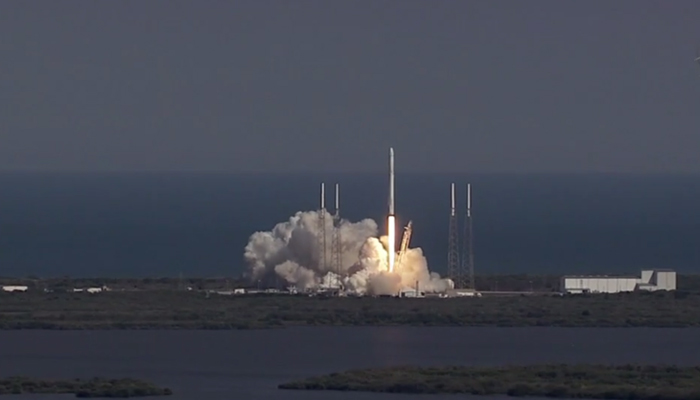-
Tips for becoming a good boxer - November 6, 2020
-
7 expert tips for making your hens night a memorable one - November 6, 2020
-
5 reasons to host your Christmas party on a cruise boat - November 6, 2020
-
What to do when you’re charged with a crime - November 6, 2020
-
Should you get one or multiple dogs? Here’s all you need to know - November 3, 2020
-
A Guide: How to Build Your Very Own Magic Mirror - February 14, 2019
-
Our Top Inspirational Baseball Stars - November 24, 2018
-
Five Tech Tools That Will Help You Turn Your Blog into a Business - November 24, 2018
-
How to Indulge on Vacation without Expanding Your Waist - November 9, 2018
-
5 Strategies for Businesses to Appeal to Today’s Increasingly Mobile-Crazed Customers - November 9, 2018
SpaceX delivers world’s first inflatable room for astronauts
Inflatable habitats are created to take up less room on a rocket, but provide greater volume for living and working in space once expanded, NASA said, noting that this test allows investigators to gauge how well the expandable habitat protects itself against solar radiation, space debris and contamination.
Advertisement
SpaceX’s Dragon will join three cargo carriers and two crew capsules already parked there. “Nice job capturing that Dragon”.
The revolutionary pod is made by Bigelow Aerospace and when it will be filled with air by the end of May 2016, it is likely to bloat up to the size of a small bedroom.
The inflatable technology could change the way astronauts live in space.
While the National Aeronautics and Space Administration (NASA) aims to establish inflatable habitats on Mars in a couple of decades, Bigelow Aerospace plans involve releasing a pair of inflatable space stations for commercial lease in coming four years.
The Dragon will remain at the station for a month before returning to Earth with science samples, many of them from one-year spaceman Scott Kelly.
The BEAM is set to begin use in May, and NASA says astronauts plan to enter for a few hours several times a year to “retrieve sensor data and assess conditions”. A launch accident last June put shipments on hold.
“Touchdown speed was ok but a leg lockout didn’t latch, so it tipped over after landing”, SpaceX CEO Elon Musk tweeted at the time.
The achievement is a major step forward for the company as it seeks to build a reusable rocket system to significantly reduce the cost of future space missions.
According to a report in TheVerge by Loren Grush, “SpaceX has finally landed its Falcon 9 rocket on a drone ship at sea, after launching the vehicle into space this afternoon”.
After Friday’s launch, SpaceX landed the Falcon 9 rocket’s first stage on a ship down range in the Atlantic Ocean. “Today’s success is a crucial milestone for SpaceX, as it shows the company can land its rockets both on solid ground and ocean”.
Advertisement
Coupled with the successful recovery of a Dragon 9 booster stage on land on 21 December, SpaceX has now demonstrated the basic feasibility of recovering the first stage of any rocket launch, whether the payload is meant to be lofted to low-earth orbit, geostationary orbit or proceed to the Moon or another planet, such as Mars.




























